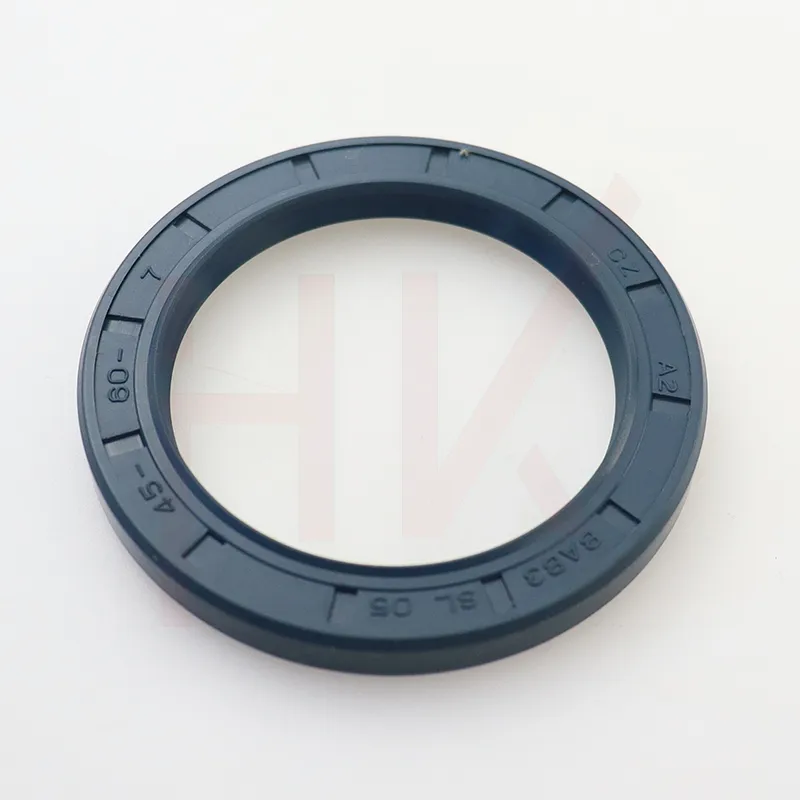ഡിസം . 03, 2024 23:53 Back to list
Understanding the Function and Importance of Rotary Shaft Seals in Machinery
Understanding Rotary Shaft Seals Key Components and Their Importance
Rotary shaft seals, often referred to as oil seals or lip seals, play a critical role in various mechanical systems. These seals are vital in equipment where a rotating shaft passes through a housing, and they function primarily to prevent the leakage of fluids while keeping contaminants out. Their applications span across industries, including automotive, aerospace, manufacturing, and heavy machinery.
Structure and Design
A rotary shaft seal typically consists of three main elements the sealing element, the body, and the spring. The sealing element is usually made of elastomeric materials, such as rubber or polymer, which allows it to conform closely to the surface of the rotating shaft. This adaptability is crucial as it helps maintain a tight seal and prevents fluid leakage.
The body of the seal, which is often made of metal or plastic, positions the sealing element within the housing. The spring, typically a garter spring, applies consistent pressure to the sealing lip against the shaft. This pressure ensures that even with variations in temperature and pressure, the seal remains effective.
Functionality
The primary function of a rotary shaft seal is to contain lubricants or other fluids within a particular area of machinery. For instance, in automotive applications, these seals are used in engines, transmissions, and differentials to keep oil contained and prevent it from leaking out. Similarly, in hydraulic systems, they maintain hydraulic fluid within the system, ensuring efficient operation and preventing damage to components.
Additionally, rotary shaft seals are designed to keep unwanted particles, dust, and other contaminants out of lubricated areas. When foreign matter enters a system, it can lead to premature wear of components, reduced efficiency, and ultimately, system failure. By effectively sealing off the internal environment, rotary shaft seals contribute significantly to the longevity and performance of machinery.
Types of Rotary Shaft Seals
Several types of rotary shaft seals exist, each tailored for specific applications and operating conditions. Common varieties include
rotary shaft seal

1. Single Lip Seals These seals feature a single sealing lip and are often used in less demanding environments where the containment of low-pressure fluids is required.
2. Double Lip Seals With two sealing lips, these seals provide enhanced protection against both leakage and contamination, making them suitable for harsher conditions.
3. Floating Seals These are used in applications where the shaft may have some axial movement, allowing the seal to adapt more easily while maintaining a tight fit.
4. V-Ring Seals These seals utilize a unique design that allows them to be mounted on the rotating shaft and provide sealing against a stationary surface, offering versatility in various setups.
Maintenance and Replacement
Although rotary shaft seals are designed for durability, they are not immune to wear and degradation over time. Factors such as high temperatures, aggressive chemicals, and mechanical stresses can compromise their integrity. Regular maintenance checks are essential to identify any signs of wear, such as leaks or unusual noises, which could indicate a failing seal.
When replacing a rotary shaft seal, it is crucial to select the correct type and size to ensure a proper fit. Installation should also be performed carefully to avoid damage to the seal during the process.
Conclusion
In summary, rotary shaft seals are essential components in numerous mechanical systems, vital for the prevention of fluid leaks and contamination. Understanding their structure, functionality, and maintenance requirements can aid in optimizing equipment performance and extending the lifespan of machinery. With their broad range of applications, investing in quality rotary shaft seals is a key consideration for ensuring operational efficiency across various industries.
-
TCN Oil Seal Metal Ring Reinforcement for Heavy Machinery
NewsJul.25,2025
-
Rotary Lip Seal Spring-Loaded Design for High-Speed Applications
NewsJul.25,2025
-
Hydraulic Cylinder Seals Polyurethane Material for High-Impact Jobs
NewsJul.25,2025
-
High Pressure Oil Seal Polyurethane Coating Wear Resistance
NewsJul.25,2025
-
Dust Proof Seal Double Lip Design for Construction Equipment
NewsJul.25,2025
-
Hub Seal Polyurethane Wear Resistance in Agricultural Vehicles
NewsJul.25,2025
-
The Trans-formative Journey of Wheel Hub Oil Seals
NewsJun.06,2025
Products categories
















